A brand new Chris Killip retrospective provides depth to his outstanding profession
Chris Killip’s work is impassioned, urgent – but it is rarely tragic, despite the circumstances faced by many of the people he photographed, and remained close to, over the course of his life. There are images that will evoke tragedy in some audiences, but then, for Killip, it was never about audiences.
The late photographer was best known for his work made during the tumult of the 1970s and 1980s, as industry in the north of England was crumbling. He has long been considered a key documentarian of de-industrialisation in Britain, a label he eventually acknowledged himself.
Top: Cookie in the snow, Seacoal Camp, Lynemouth, Northumbria, 1984; Above: Girls Playing in the street, Wallsend, Tyneside, 1976. All images: © Chris Killip Photography Trust/Magnum Photos
The Photographers’ Gallery in London is staging a retrospective of his work overseen by photographer Ken Grant and curator Tracy Marshall-Grant, which they hope will bring more context to the man behind the images. It is the first exhibition on Killip since he died from cancer in 2020. Killip had spoken about the idea of a retrospective, but it was “only when he started to become ill that the conversations really accelerated”, Grant says.
The show is joined by a Thames & Hudson book, designed by Niall Sweeney and Nigel Truswell, which features essays by Grant, Gregory Halpern and others, as well as further materials including some rare colour works.
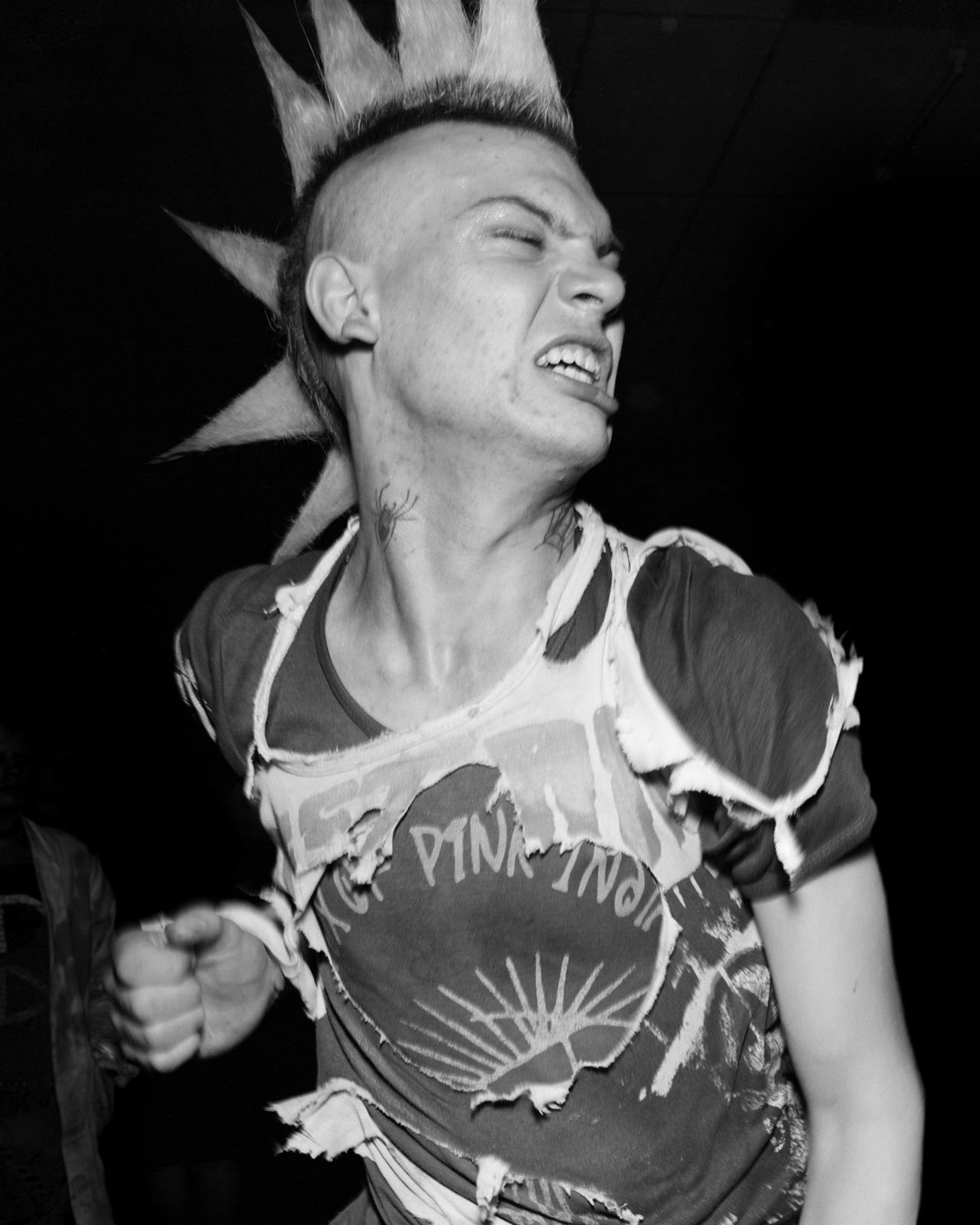
The Station, Gateshead, 1985
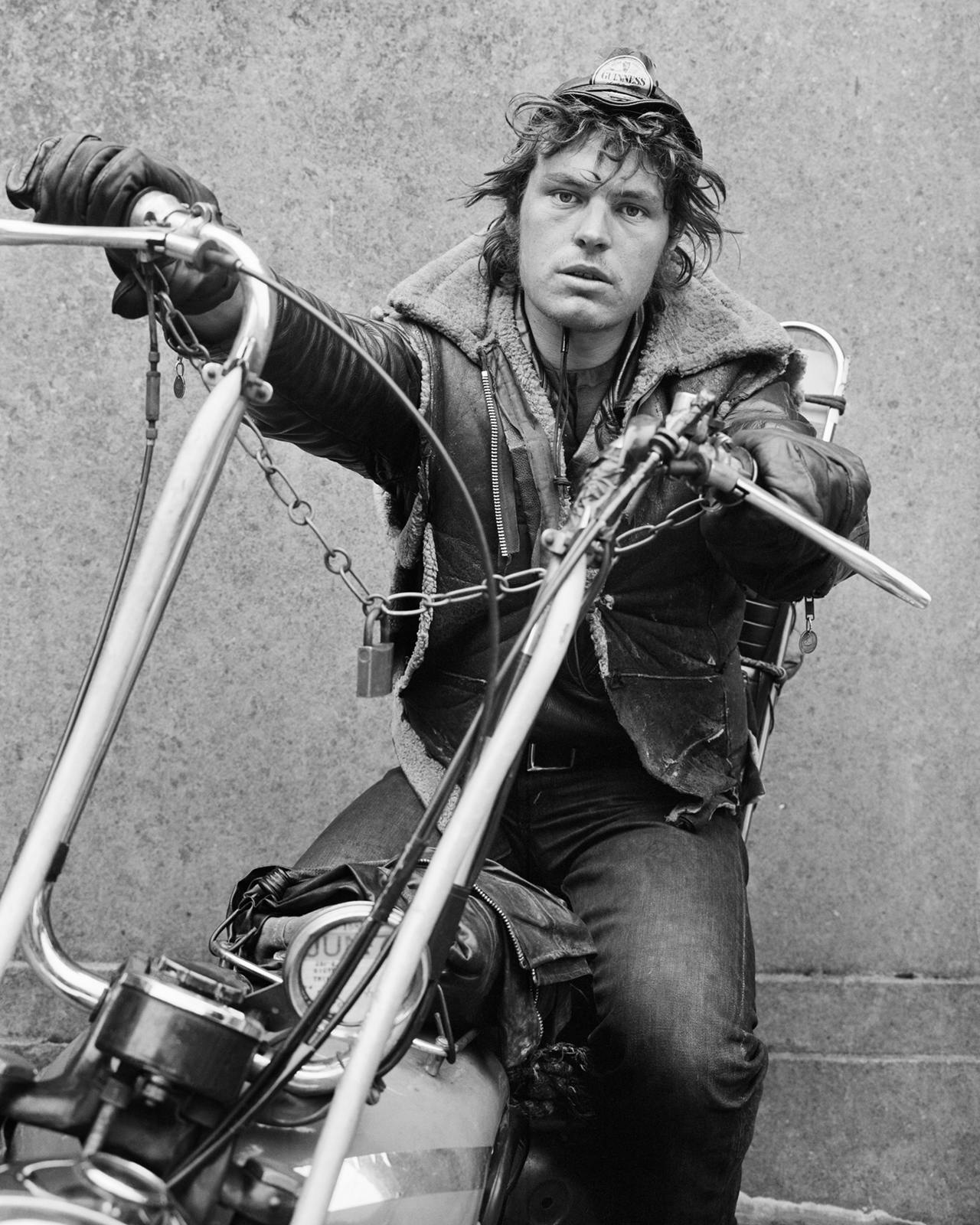
TT Races Supporter, Isle of Man, 1971
“Because Chris knew he was dying, and because he was leaving a lot of the work in the [Martin] Parr Foundation as his archive, he did what I’ve been regarding as his first selection of the retrospective,” says Grant-Marshall. The works on display have been curated from that first ‘edit’ by Killip, and, aside from the oversized pieces in the show, the prints were all made by him in the last decade of his life. “So it’s been quite good because we can already feel quite close to what he wanted,” she adds.
The exhibition begins with Killip’s work in the Isle of Man, where he was from, followed by his photographs made in the north of England in the early 1970s. In these images, Grant says, “you get a sense of someone who’s really excited about discovering photography and what photography could do, but also excited about moving through the north of England and figuring out what was taking place there”.
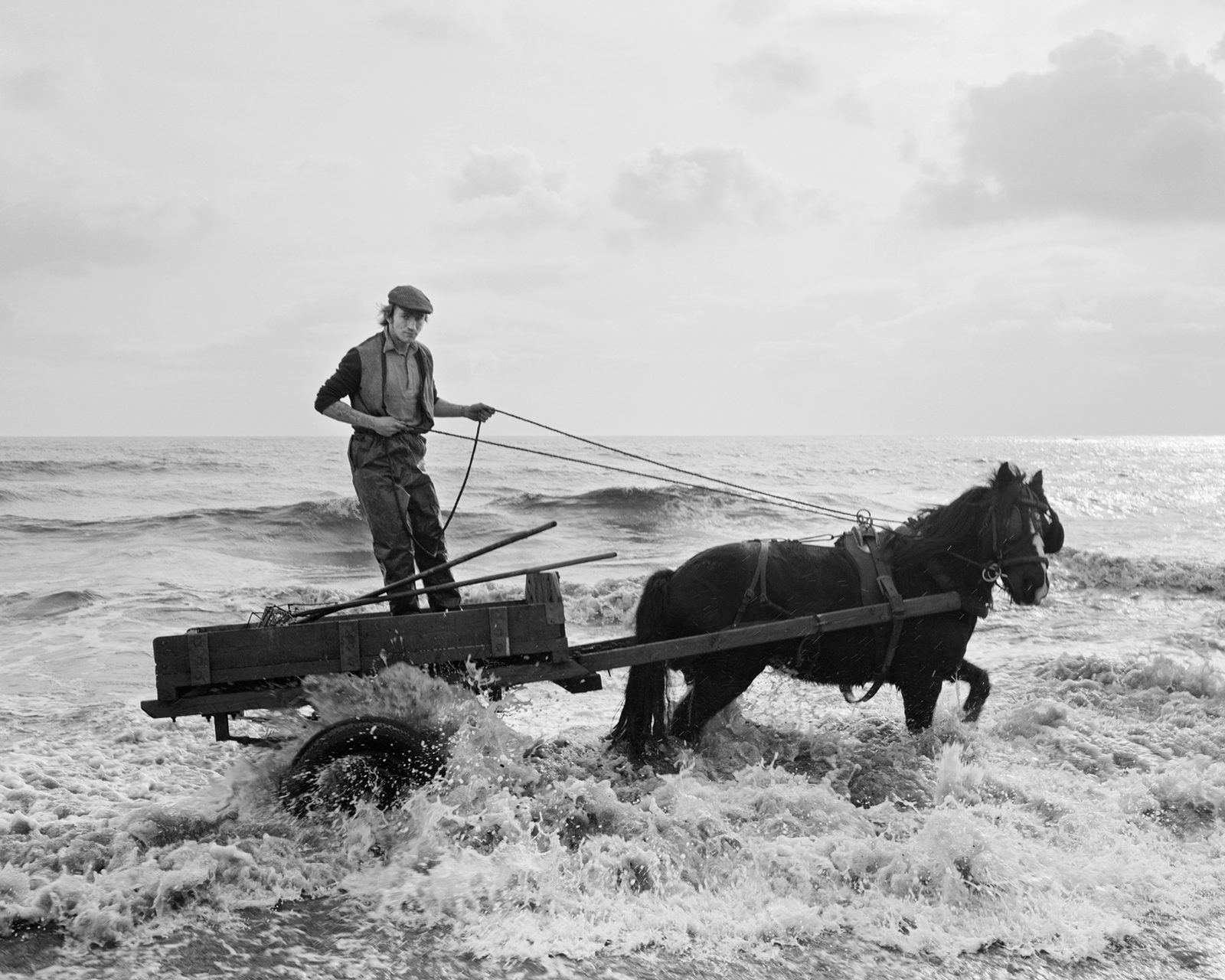 Gordon in the water, Seacoal Beach, Lynemouth,1983
Gordon in the water, Seacoal Beach, Lynemouth,1983
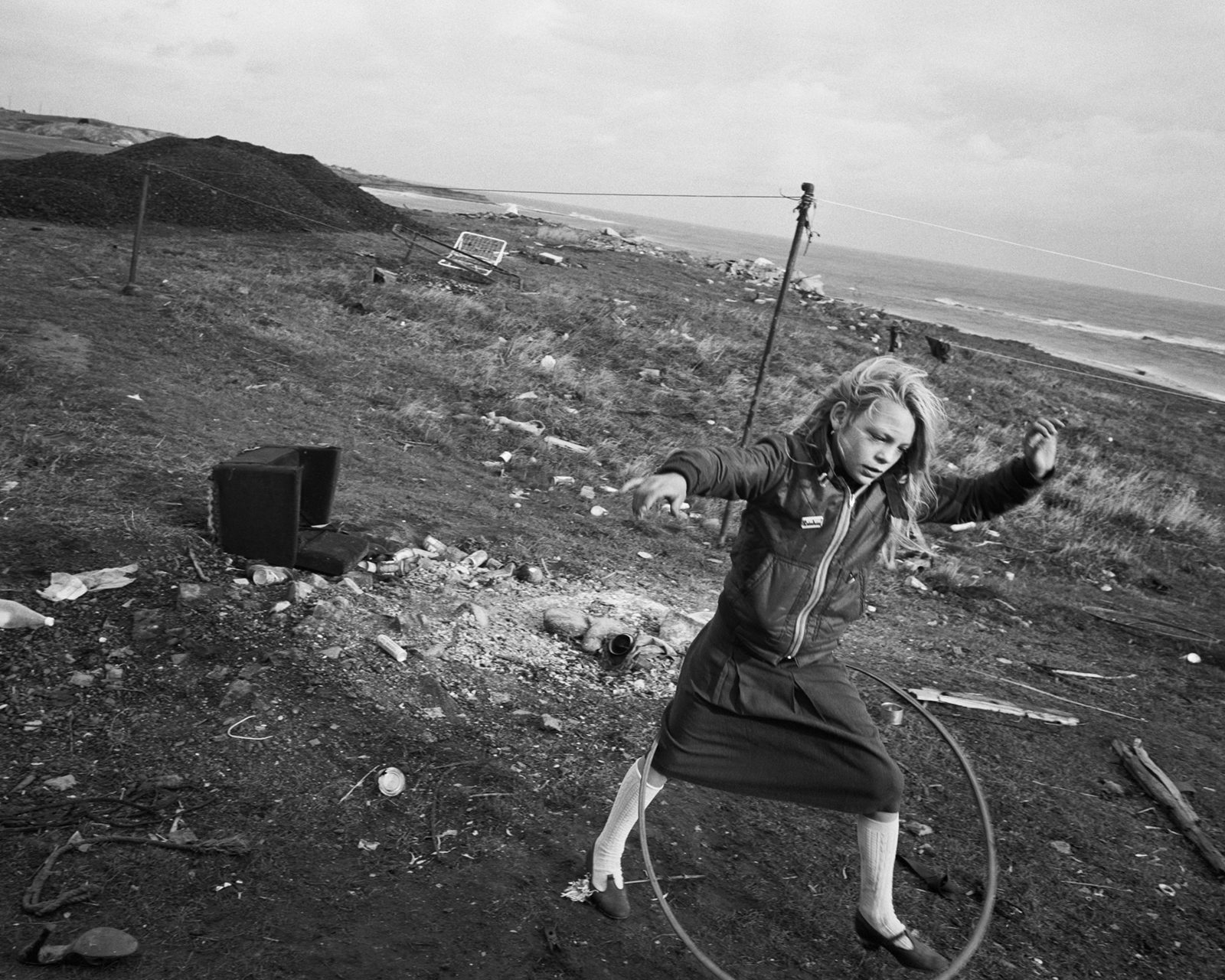 Helen and her hula hoop, Seacoal Camp, Lynemouth, Northumbria, 1984
Helen and her hula hoop, Seacoal Camp, Lynemouth, Northumbria, 1984
Then comes three major series, including Killip’s Seacoal project. It was made between 1982 and 1984 in Lynemouth, Northumberland, where coal thrown out to sea from the nearby mine would sometimes wash up again on the shore. People would then often gather it for fuel or selling on. Though Killip photographed the area “intensely”, there remained some distance, Grant explains, but he ended up getting a caravan and living on the beach with the seacoal workers. They became close friends, and Grant says that he was still in touch with them at the end of his life.
Elsewhere is his work made in the North Yorkshire fishing village of Skinningrove, “a place which was willfully kept by the people who lived there unkempt”, says Grant, describing how people fished and worked in the local iron smelter. “Several of the people he photographed, they died because of drowning, and Chris was very much part of the aftermath of that situation, making pictures of the families.”
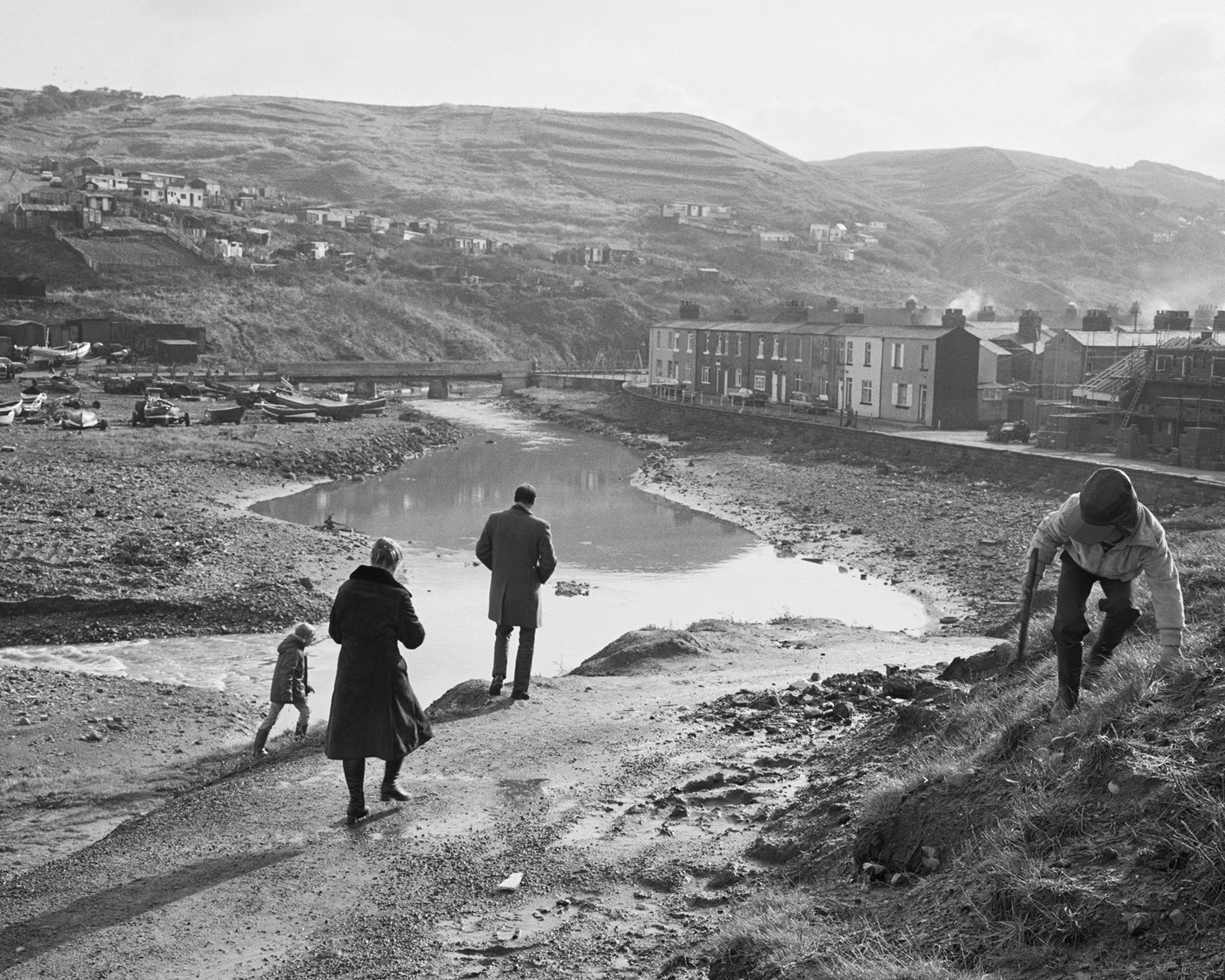 Family on a Sunday walk, Skinningrove, 1982
Family on a Sunday walk, Skinningrove, 1982
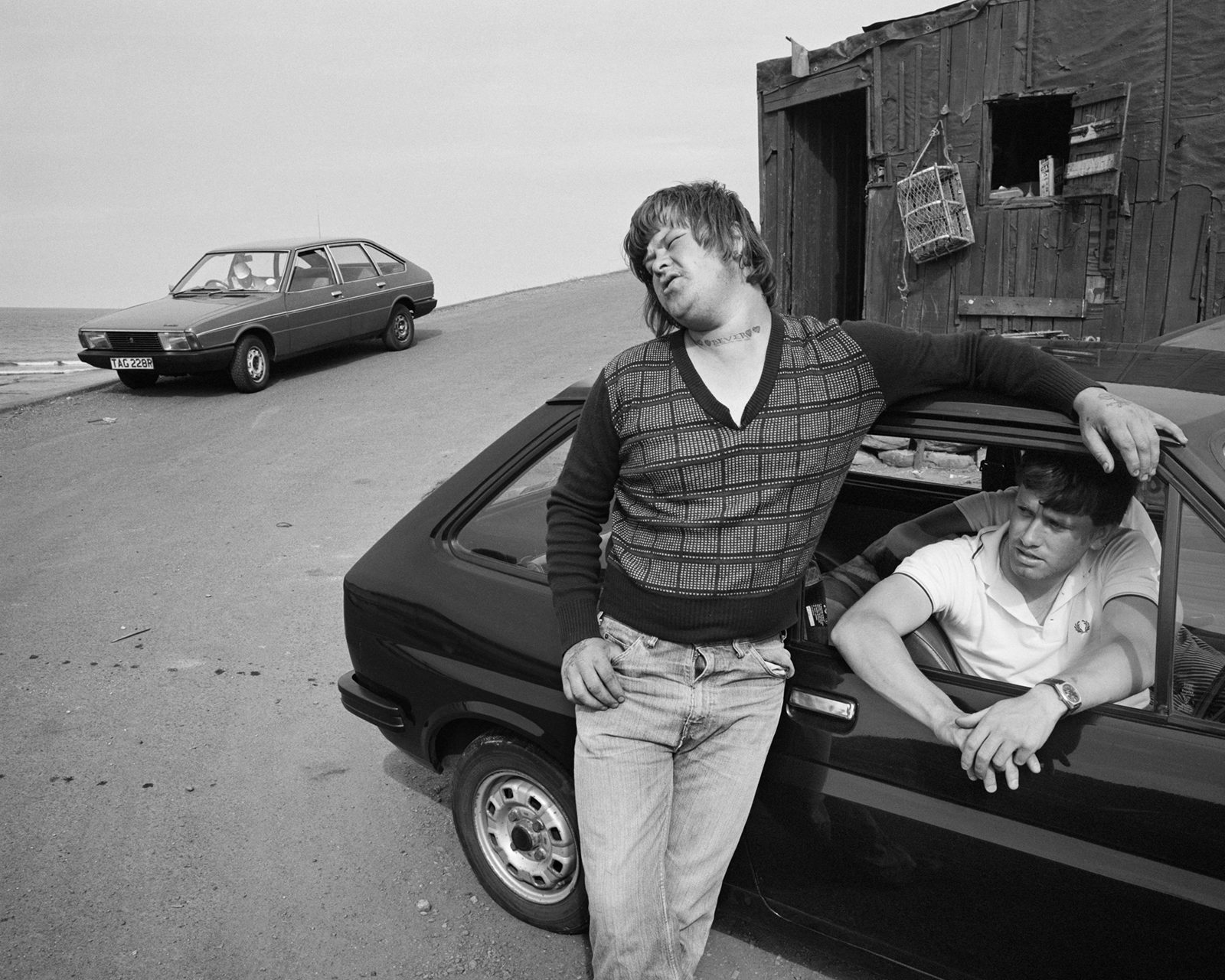 Bever, Skinningrove, North Yorkshire, 1983
Bever, Skinningrove, North Yorkshire, 1983
The final room illustrates the making of his pioneering photo book, In Flagrante, including some key works alongside other, less widely known images made in the process. The idea was to show just how “industrious” a photographer Killip was, who juggled commissions and launching a gallery, all while committing himself to the communities that he photographed.
Industry, its decline and the transition between the two were recurring themes in his work, but through his humanistic lens, those subjects were always second to the people most impacted by them.
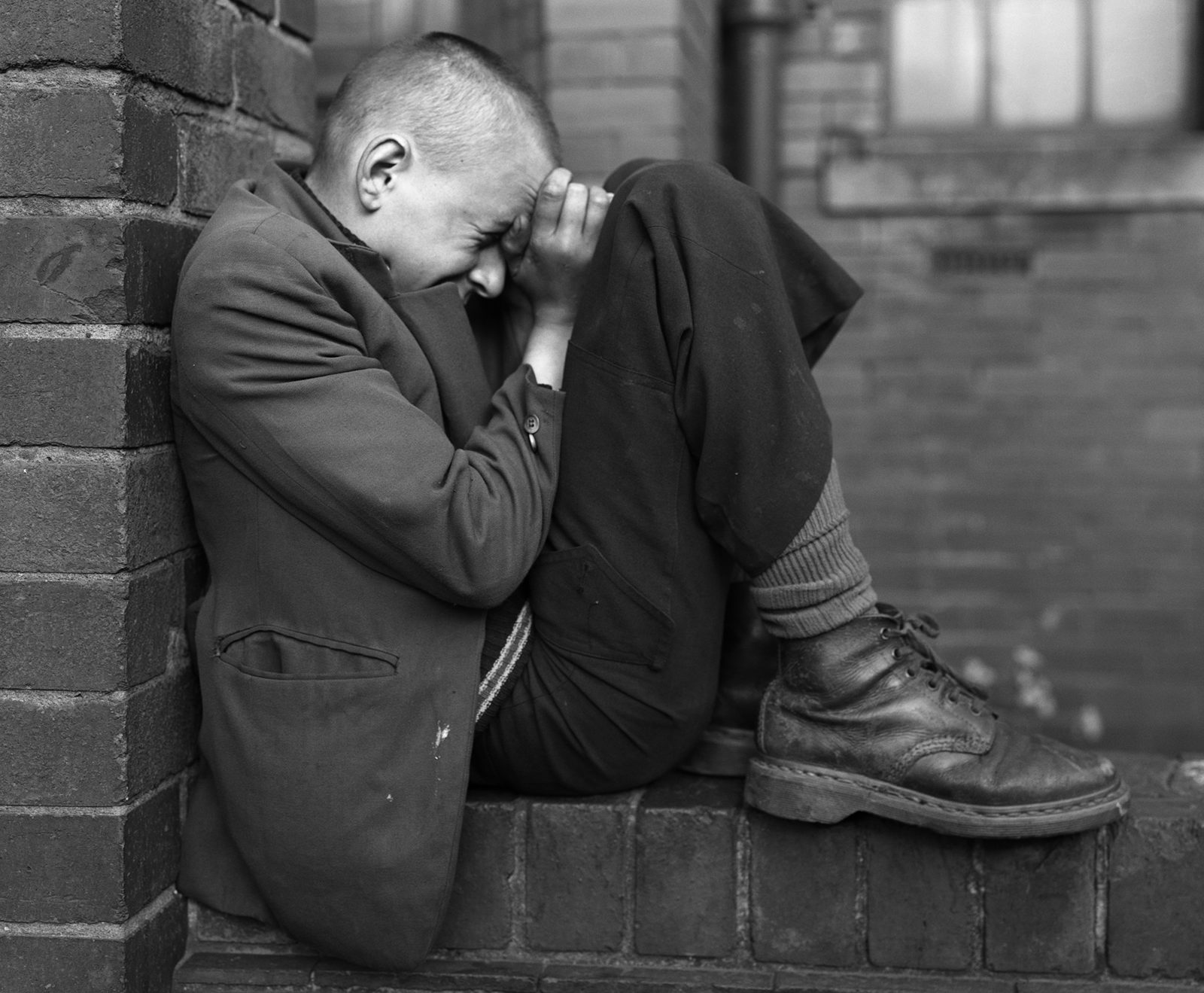 Youth on wall, Jarrow, Tyneside, 1975
Youth on wall, Jarrow, Tyneside, 1975
“When you look at the work in a small sample, you see work which is full of the austerity of the time in which it was photographed,” Grant explains. Industries that had once provided stability were eroding, “and you see a certain pulling of the rug from under communities which I think people recognise and feel for”.
Yet it’s in experiencing his work as a whole that you begin to see the tenderness in these exchanges, Grant continues. “When you look at the Isle of Man pictures, in the early 70s, people are giving back something to him. You sense that they almost seem fond of him, they seem appreciative of what he’s doing, they recognise something in him, and they trust him. They believe in him, they believe in what he did, and I think all of that absolutely manifests in terms of how we respond to it.”
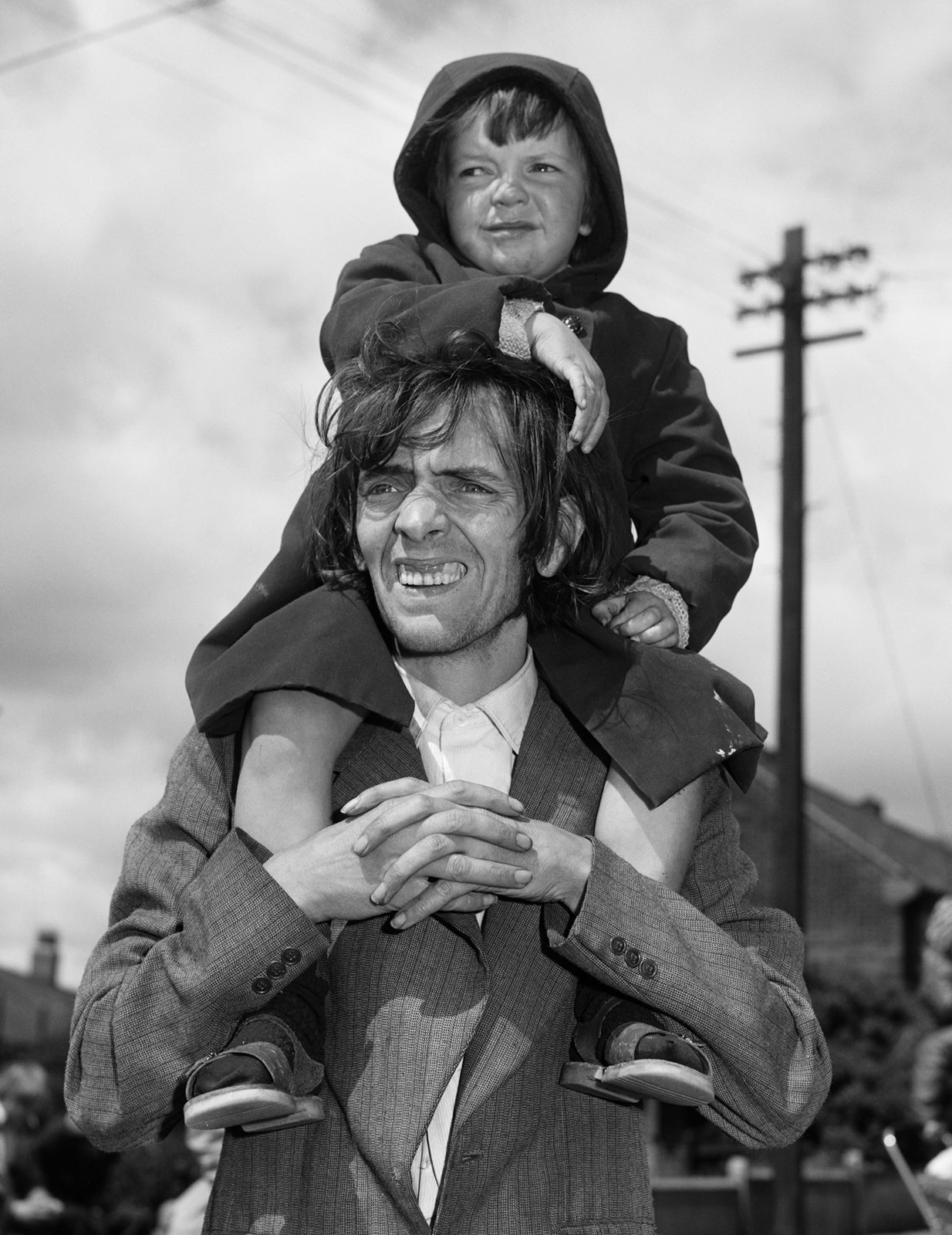 Father and son watching a parade, West end of Newcastle, Tyneside, 1980
Father and son watching a parade, West end of Newcastle, Tyneside, 1980
Chris Killip is at the Photographers’ Gallery, London until February 19. An accompanying book, Chris Killip 1946-2020, is published by Thames & Hudson, out October 20; thephotographersgallery.org.uk
